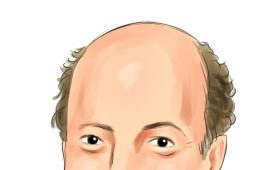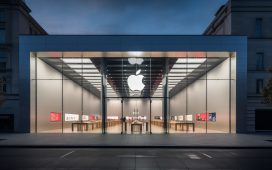Latest news on ETFs
Visit our ETF Hub to find out more and to explore our in-depth data and comparison tools
Across the road from the premiere gathering of the $8tn US exchange traded funds industry, investment advisers are on board the Venetian Lady drinking ETF-themed cocktails, helping themselves to prime rib and smoking cigars.
Luxury yachts might be commonplace in the waters around Miami, but the decision to lay on a cruise for advisers is a distinct change of course for the voyage’s sponsor, the notoriously picky Dimensional Fund Advisors — a longtime mutual fund provider that is a newcomer to the ETF industry having launched its first ETF less than three years ago.
Dimensional, which has already amassed $120bn in ETF assets under management — marking a significant proportion of its total AUM of $677bn — historically has taken pains to screen out “quick money” from investors, and deliberately avoided splashy marketing of its mutual fund offering, company officials said. But, given that ETFs can be easily bought by anyone who can access the stock market, Dimensional has accepted it needs to adapt, they explained.
So, like other active asset managers with large US mutual fund franchises but smaller ETF arms, it is trying out new tactics to win over the likes of Mark Rushwald, an investment adviser who said he made up his mind to use ETFs more than a decade ago and has not looked back.
“I won’t use mutual funds. They don’t perform,” said Rushwald, who oversees about $45mn in client assets. “Active ETFs have more advantages than a mutual fund,” he said, referring in part to the beneficial tax advantage that US ETFs have over their mutual fund counterparts.
There are more than 15,000 registered investment advisers in the US, according to the Investment Adviser Association, of which more than 60 per cent provide asset management services for individuals.
This makes them key to the success of newly launched ETFs according to Todd Rosenbluth, head of research for VettaFi, a New York-based consultancy.
Managers like Dimensional, which are new to the fiercely competitive ETF industry, recognise that touting research is not enough to grab attention these days.
“We still have a tremendous amount of events and resources available for advisers to learn more about our approach to investing, breaking down this academic viewpoint that we have,” said Rob Harvey, co-head of product specialists at Dimensional. “But you also have to recognise that people don’t need to do that to go through your ETFs, and that’s OK. It’s a new approach that fits the new vehicle.”
Rushwald and Harvey are among the 1,900 attendees who came to last week’s Exchange.
Enticed by the huge growth of ETFs, a 2019 rule change that made it much quicker to come to market and innovations that have led to the rapid acceptance of active ETF strategies, many of the newest exhibitors, like Dimensional, are already household names in the mutual fund industry.
Their appearance at Exchange marks just one aspect of the event’s transformation in recent years from its humbler roots. Exchange’s growth has mirrored a surge in US ETF assets under management, which have more than doubled from about $3.4tn in 2018, according to the Investment Company Institute.
The flood of new cash shows no signs of slowing. The mutual fund industry has been struggling to retain investors’ money even while new funds have poured into their exchange traded fund counterparts. US ETFs earned about $576bn in net new assets while their mutual fund counterparts suffered about $403bn in outflows last year, according to data from Morningstar Direct. In an indication of the changes being wrought by Dimensional and other recent active manager arrivals to the industry such as Capital Group and JPMorgan, $106bn of those new ETF assets were to actively managed strategies.
Exchange featured another new arrival this year. For the first time, there were prominent displays featuring spot bitcoin ETFs, which the Securities and Exchange Commission approved last month after years of objecting to the format. A panel on spot bitcoin ETFs was so oversubscribed that even the “silent disco” headphones for listening to the discussion outside the room ran out.
The scene was unrecognisable from the first US ETF industry gatherings, which boiled down to “40 people talking to each other because there no were no clients to talk to at that point”, said Noel Archard, global head of ETFs and investor solutions for AllianceBernstein.
“Now you come to this conference and you can come to the booths and the cabanas and wherever and it is a full-bore asset management conference,” Archard said, sitting beside AB’s poolside display. “It’s representative of the industry as a whole — it’s been a very cool evolution seeing how ETFs have become very mainstream.”
Bryon Lake, global head of ETF solutions at JPMorgan Asset Management, sipped an iced coffee in a conference room at Exchange as he reflected on the changes he had seen.
“It’s settled into what it is: steady as she goes [but] lots of innovation still happening,” Lake said.
Back on board the Venetian Lady, Rushwald takes a break from dodging cigar smoke and turns serious on the topic of why he thinks ETFs will continue to make gains on their mutual fund counterparts.
If the markets were to go through another downturn, he said, one of the main reasons he would feel better having a portfolio full of ETFs was because they cost less than mutual funds. “Every little bit helps,” he said, “especially in a down market”.



